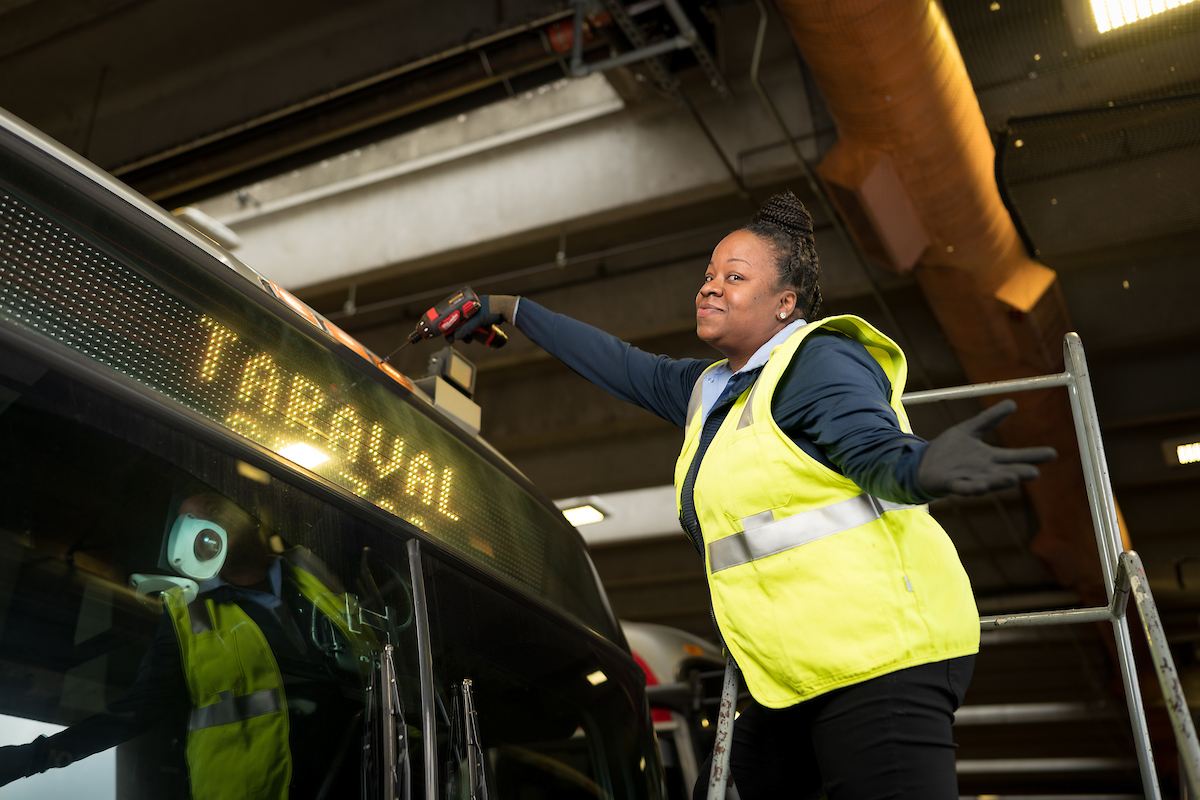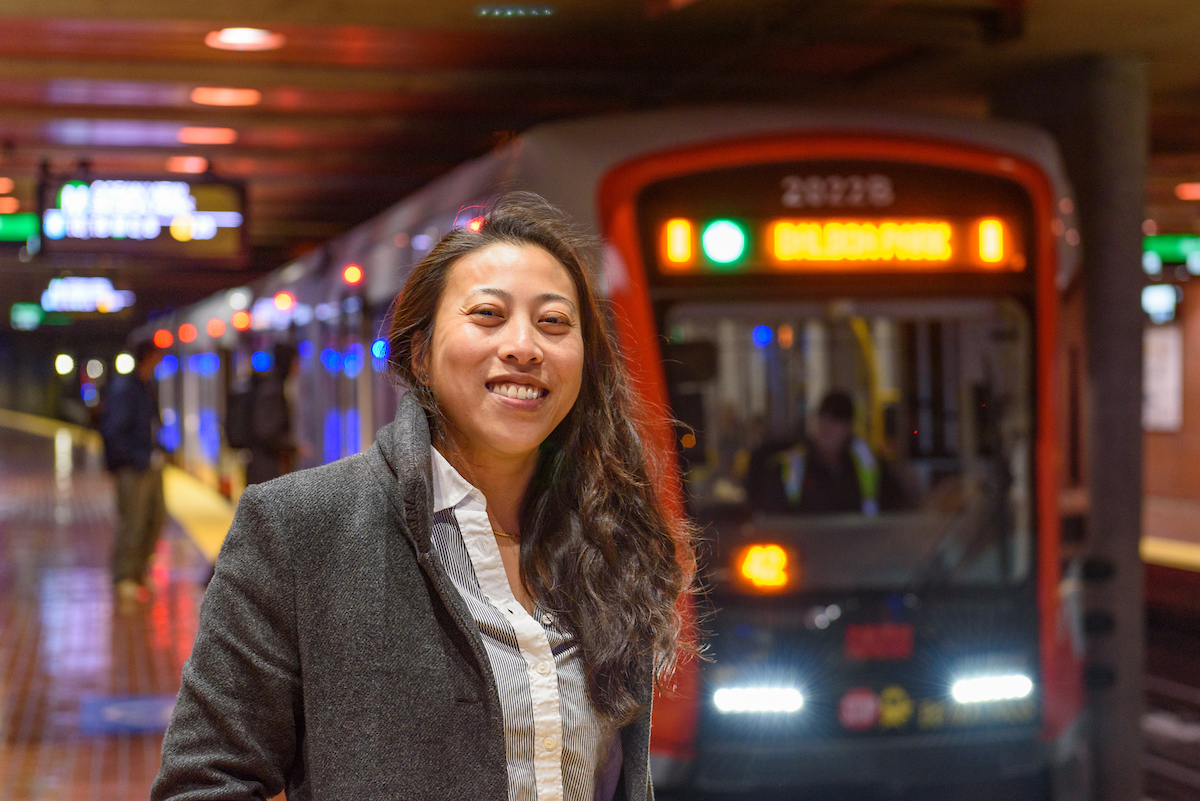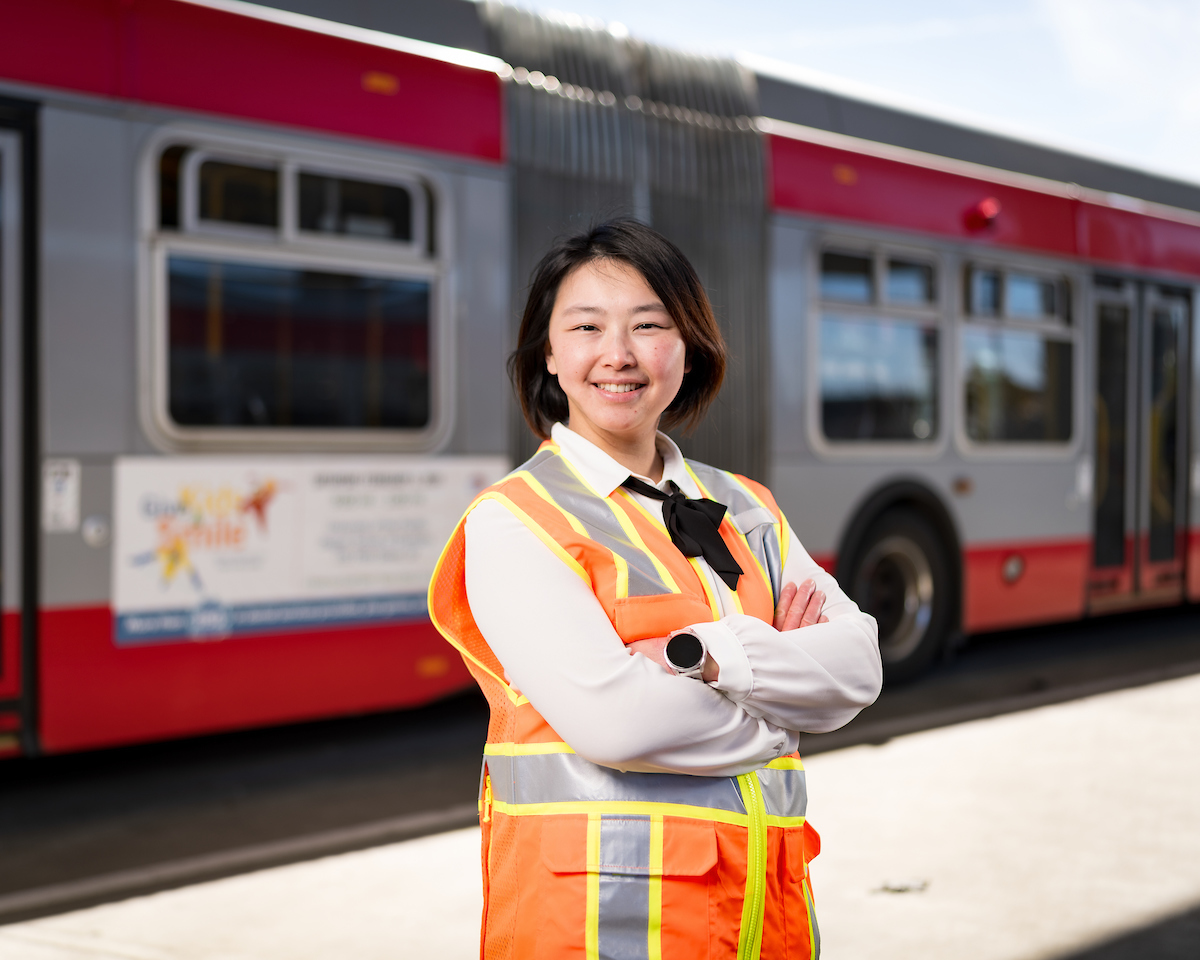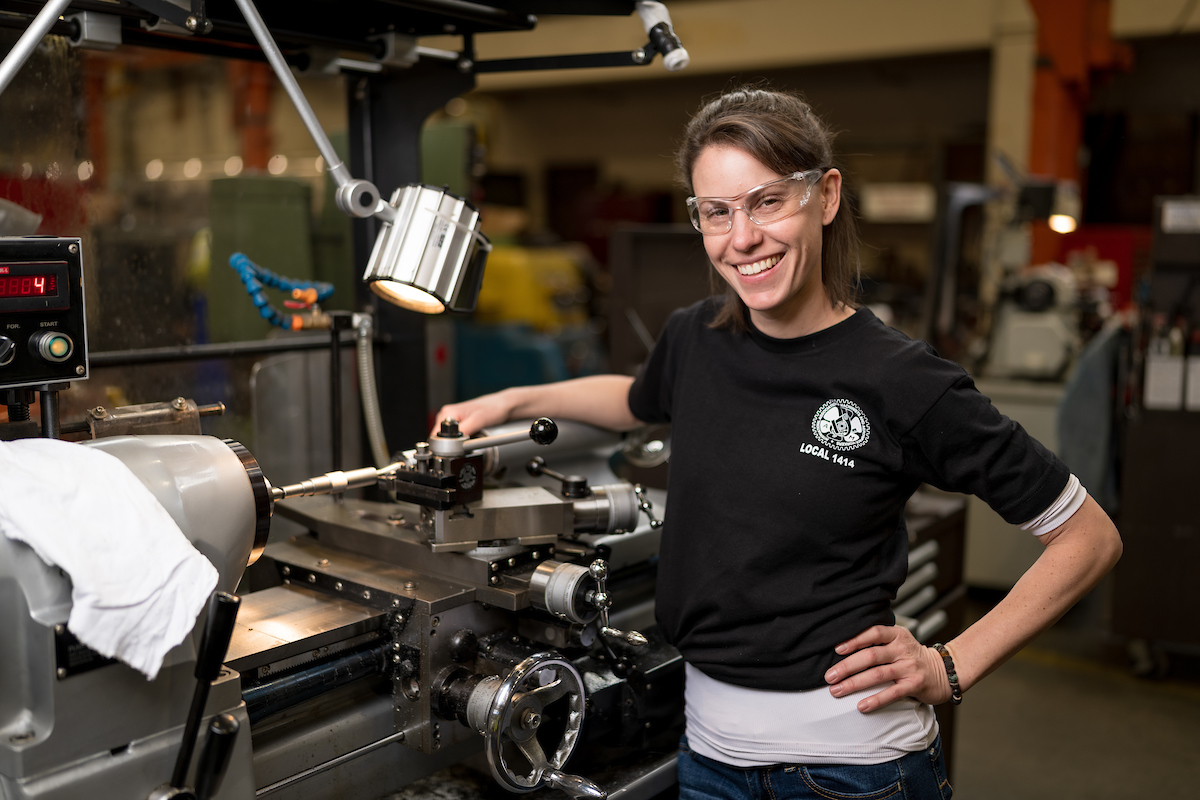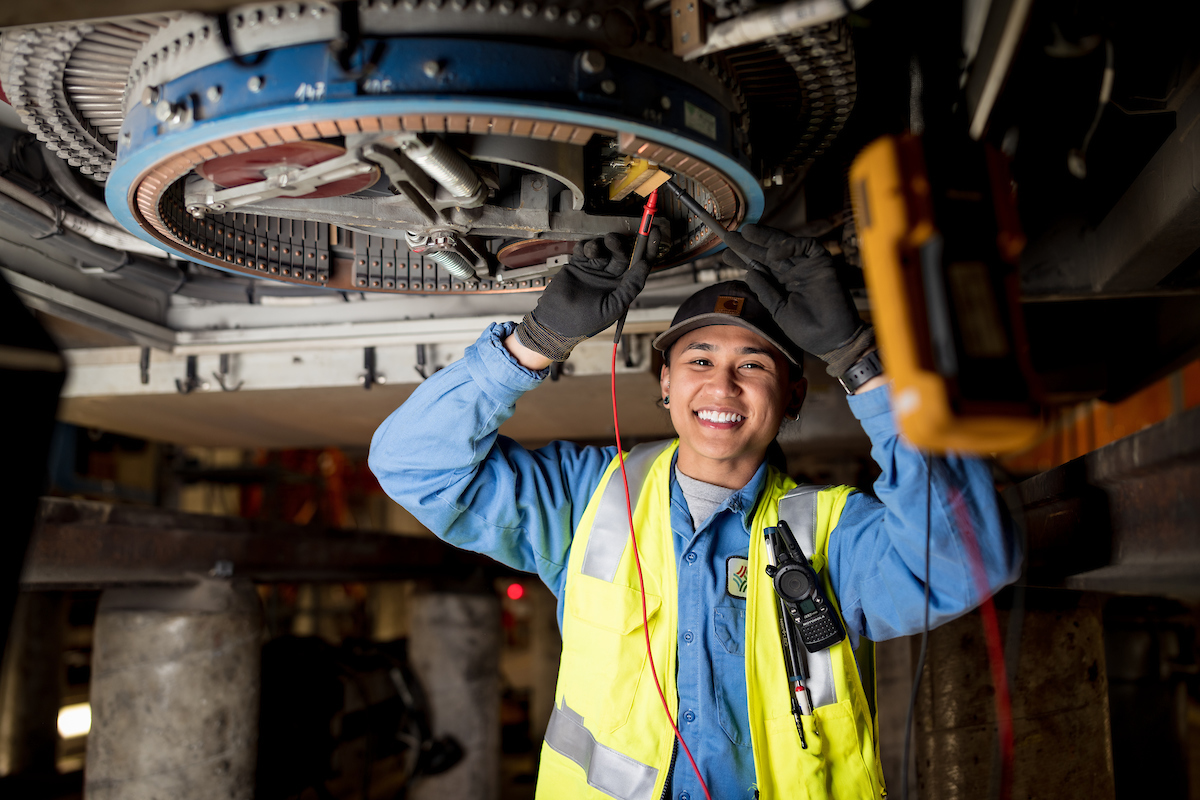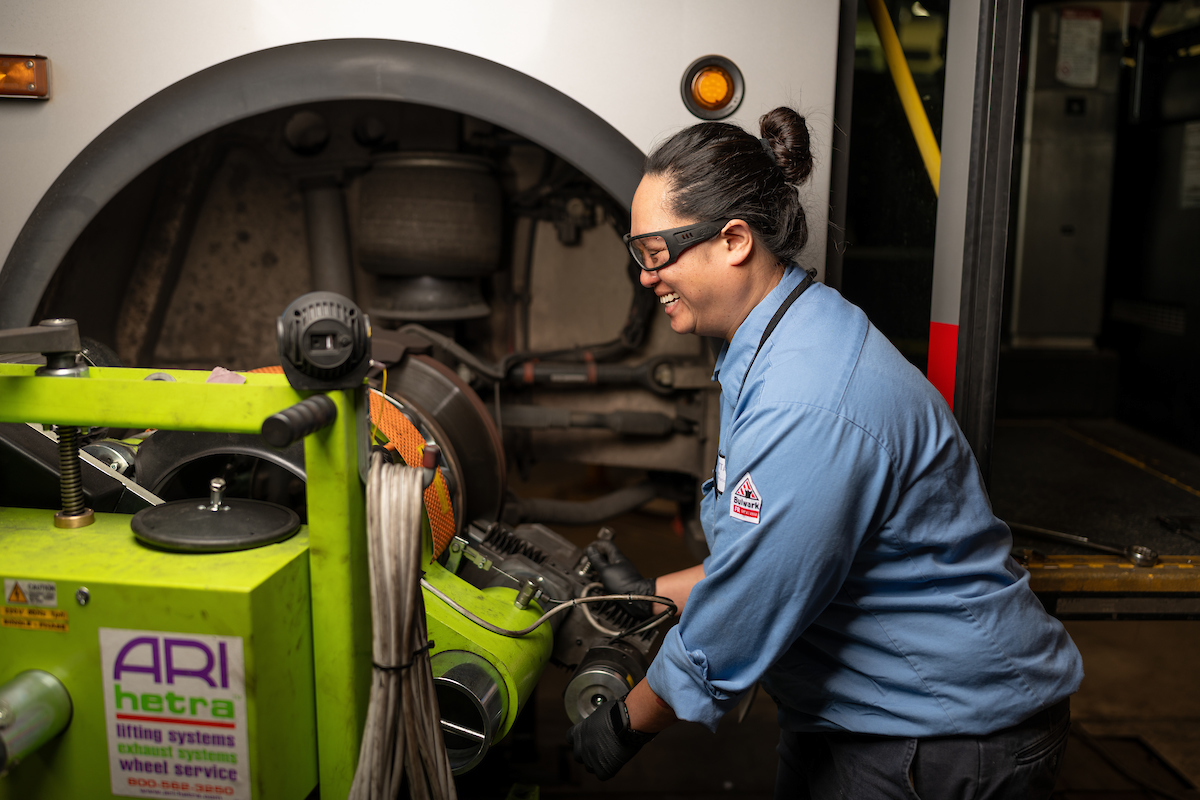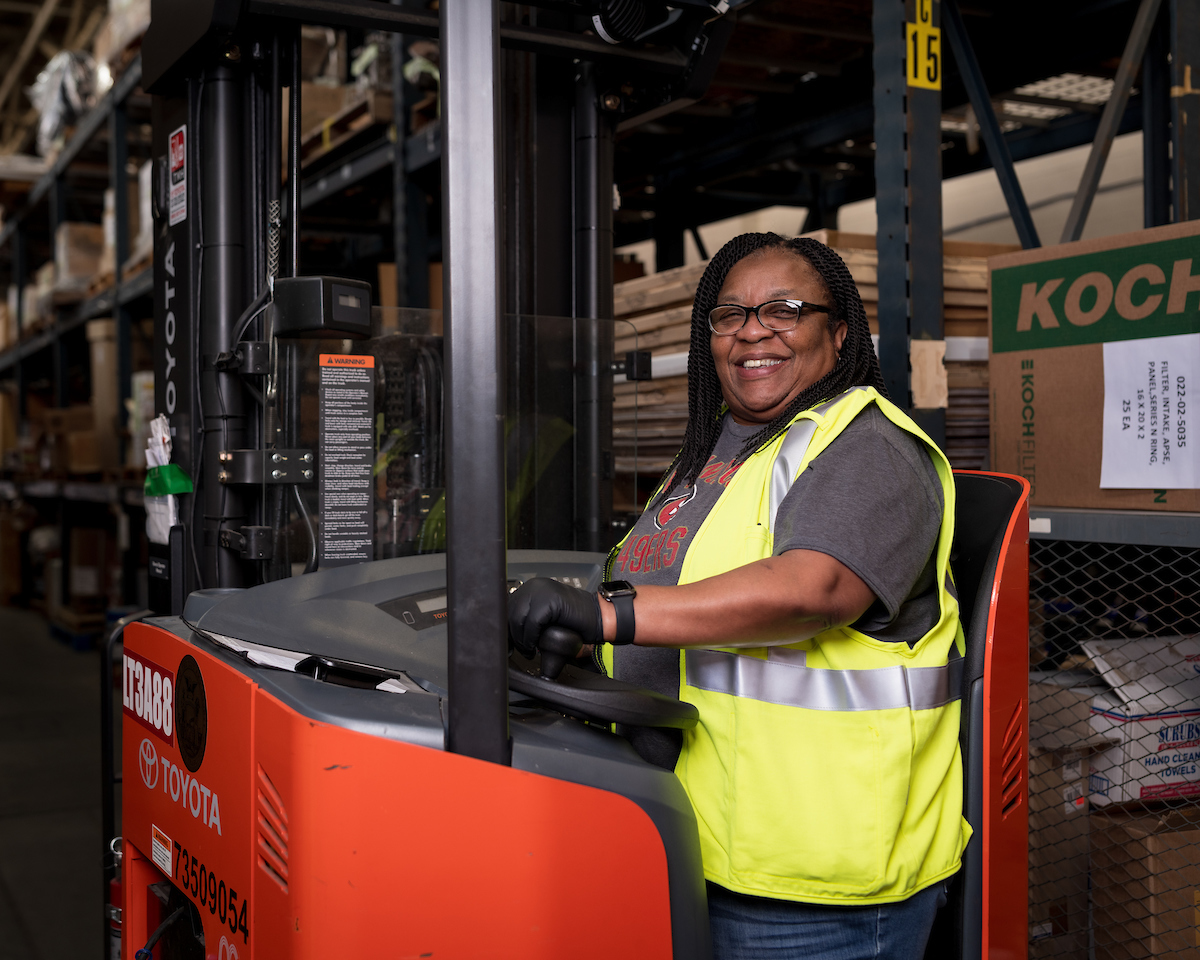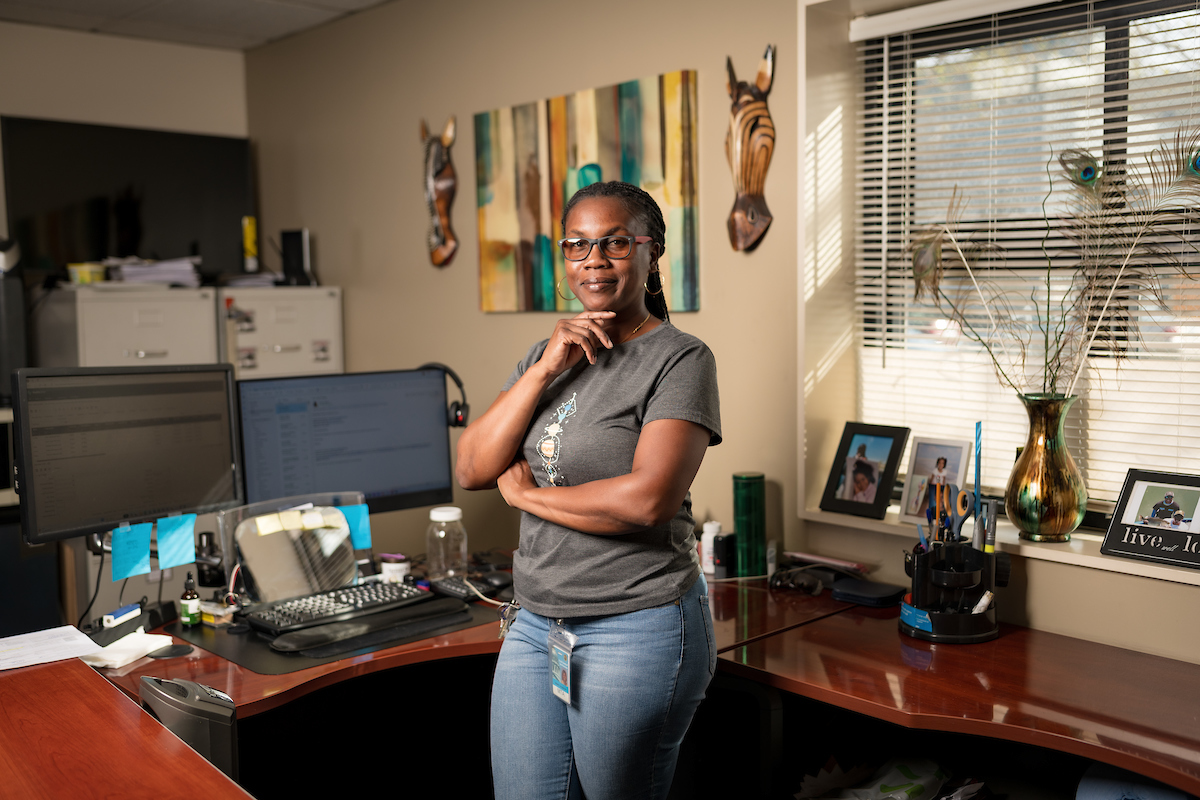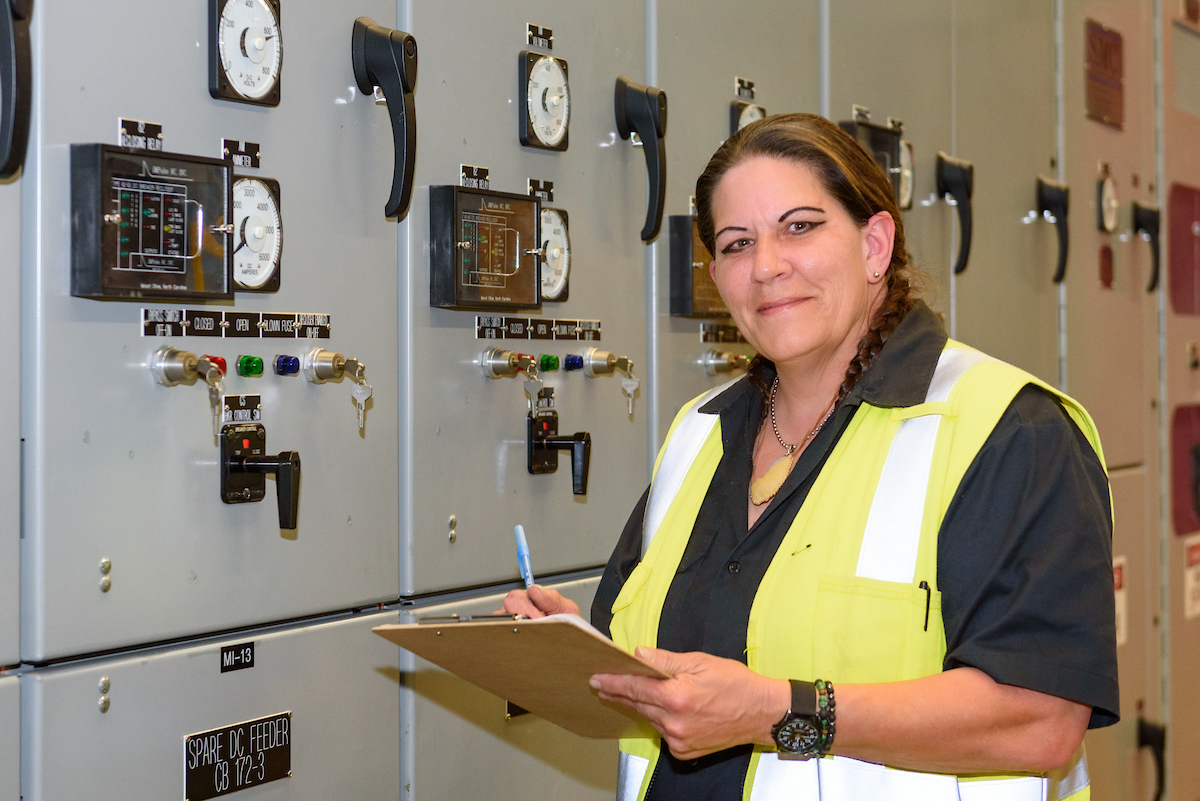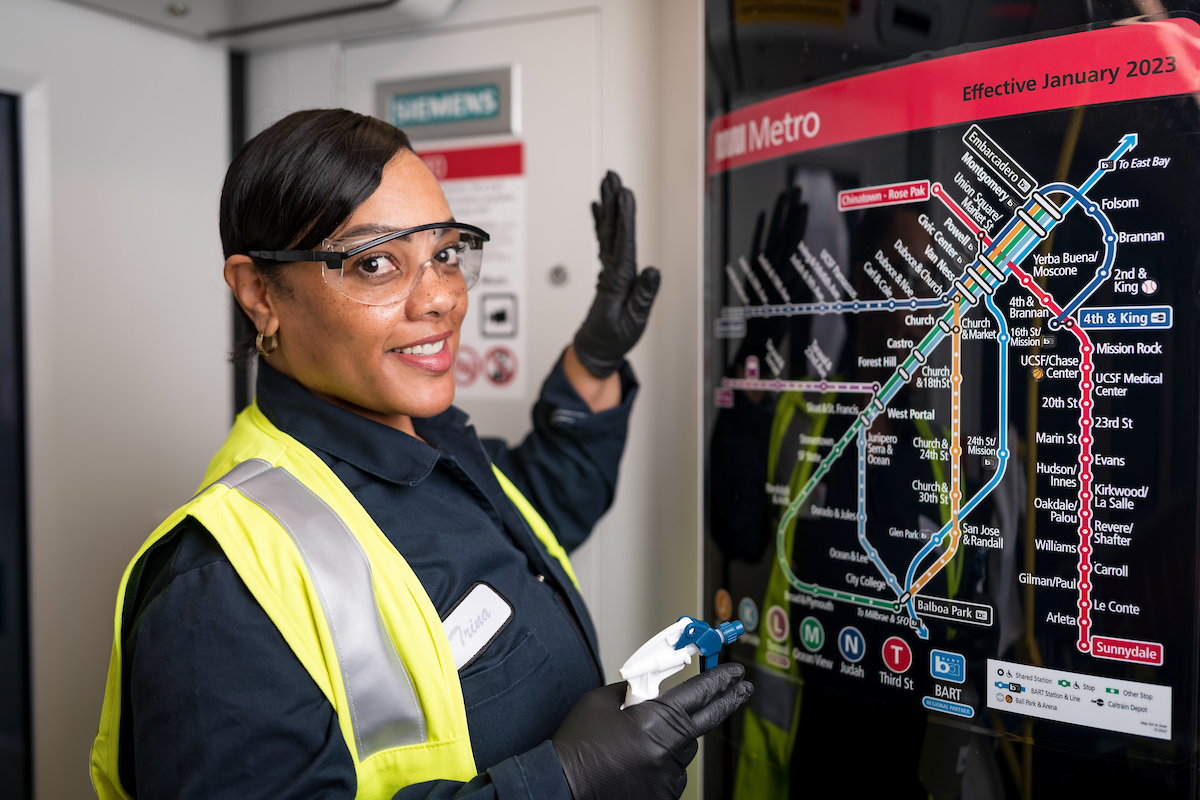How We Can Choose a Cleaner, Greener San Francisco
By Edward Wright
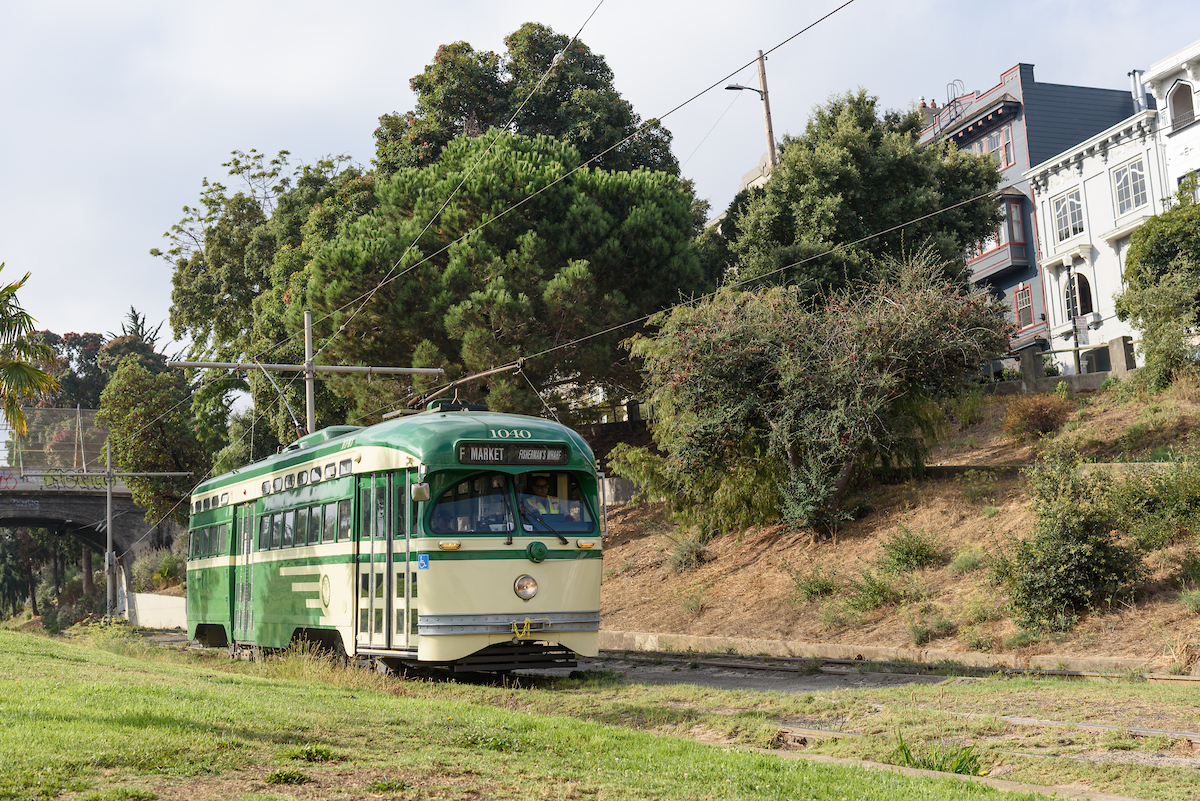
During Muni Heritage Weekend, riders took a green trip through Dolores Park in one of our historic streetcars.
Five years ago, the city declared a climate state of emergency. We see the climate crisis in our rising seas. We feel it with worsening storms, raging wildfires and a warming planet.
The good news: we can all make choices to confront it. San Francisco has chosen to be a transit-first city, to prioritize safety for people walking and rolling, and to lead the way on clean energy. That’s why San Francisco was again ranked number one in the nation on the latest clean energy survey. You can view the survey results on the American Council for an Energy-Efficient Economy’s City Clean Energy Scorecard webpage.
There is no way to meet our city’s climate goals without green options to get around. And turning these goals into reality is up to all of us. Every time you use a green option to get around, you’re helping build a better future. That’s why we’re always working to make it easy and accessible for you to ride transit, walk and bike. And to meet our climate goals, we need to make low-carbon and no-carbon options the best way to travel.
Following Earth Month and the latest clean energy scorecard, we want to celebrate your impact. We’ll share what you make possible when you use green options to get around.
Climate change is a big problem. Transportation is a big part of the solution.
San Francisco is not immune to climate change, and we have a moral obligation to do our part to confront it. We need to adapt to be more resilient and turn our city’s Climate Action Plan into reality.
Every time you walk, bike, roll, or ride public transit, you get us closer to our goal of net zero emissions by 2040. By choosing sustainable travel, you help us slash our greenhouse gas emissions. That’s critical, because transportation is one of the biggest sources in San Francisco:
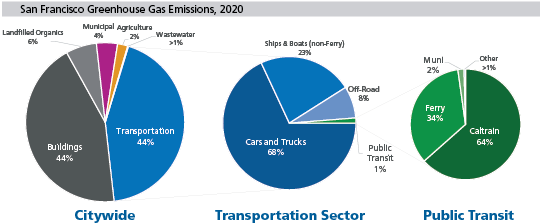
Accessible version of the San Francisco Greenhouse Gas Emissions infographic
And of course, biking and walking emit no greenhouse gases at all!
Muni runs the greenest fleet of any major city in North America
Muni is green and getting greener. Some consider electric vehicles a recent innovation -- but we have been using them for over a century!
Our light rail vehicles are electric and fossil-fuel free. Our iconic cable cars, trolleybuses and historic street cars are tried-and-true electric, zero-emission technology. All our electric vehicles run on 100% renewably generated hydro power from Hetch Hetchy. That's critical because electric vehicles are only as green as the power they run on.
For our bus fleet, the SFMTA was an early adopter of hybrid-electric technology all the way back in 2007. Our buses are very low emission. Still, we’re committed to achieving a 100% fossil-fuel free fleet. (We’re equally committed to a just transition for our workforce.)
Our taxis, a major part of our paratransit services are also very green! With over 90% low-emission vehicles, San Francisco has the cleanest taxi fleet of any major city in the nation. To further solidify itself as a national leader, the SFMTA is offering a new taxi rebate program. This way, we can help facilitate the taxi industry's transition to clean vehicles.
In 2019 we launched Green Zones. In this program, we run hybrid buses on batteries in environmentally impacted communities. This means no emissions for neighborhoods with poor air quality or a history of environmental injustice. You can learn more in our blog about the Green Zone program.
And today we’re running a pilot program to test battery-electric buses. This will show how they handle San Francisco’s hills and prepare us to use more electric buses in the future.
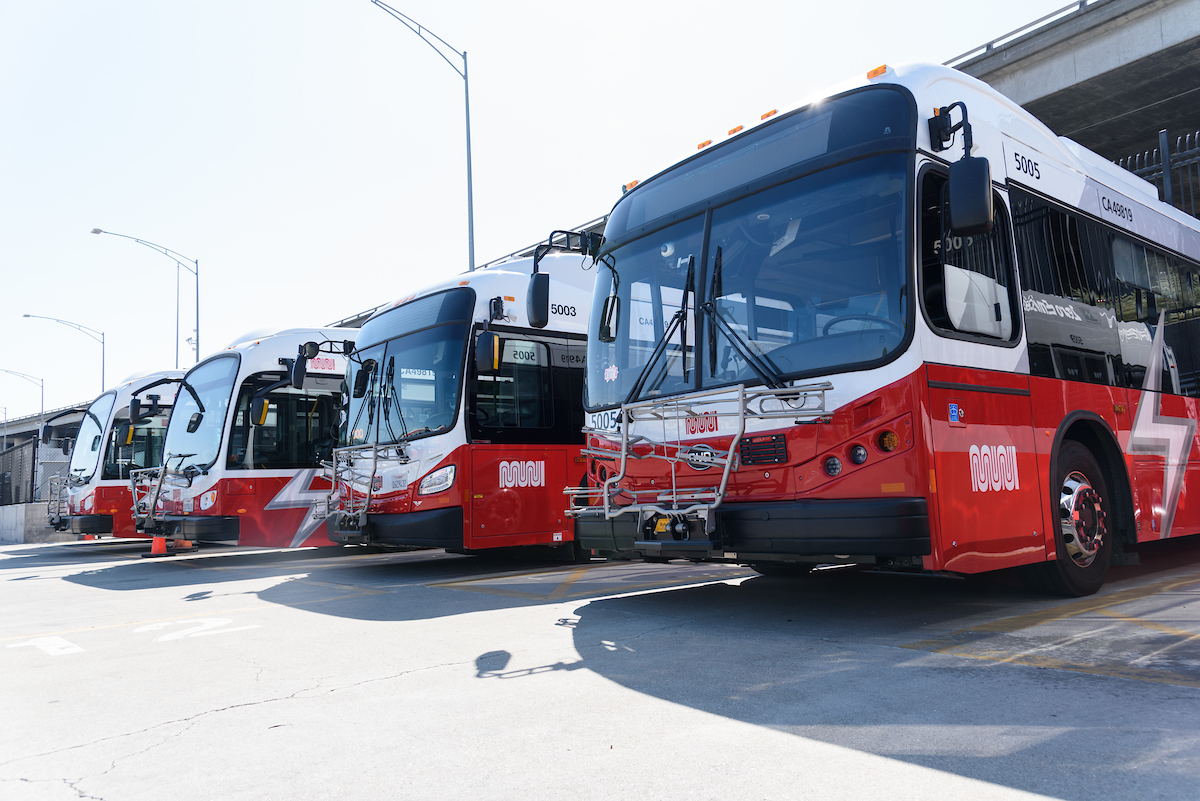 We have 10 battery-electric buses now in service for our pilot program.
We have 10 battery-electric buses now in service for our pilot program.
While we work towards a zero-emission Muni, the best way to reduce vehicle emissions in San Francisco is to ride transit, walk, bike or roll. Muni is safer, faster, cleaner, and more reliable than it’s been in decades. So, choosing transit has never been easier!
Every part of the SFMTA is working for a cleaner, greener city. Our Streets Division is working to make San Francisco one of the best cities in the world to walk and bike. Our sign and paint shops take climate action with every crosswalk and stop sign. Our facilities staff are preparing for our all-electric future and cutting emissions from our buildings. And everyone who cleans, operates, maintains and secures our buses and trains gives you a green option to get around.
On Earth Day, we kicked off a new climate action campaign to make sure Muni riders know: you take climate action every time you take Muni, walk, bike or roll. So, keep an eye out for some new signs on our shelters and buses, keep going green and together we can choose a more sustainable San Francisco.
Published May 10, 2024 at 02:02AM
https://ift.tt/04DAtiu

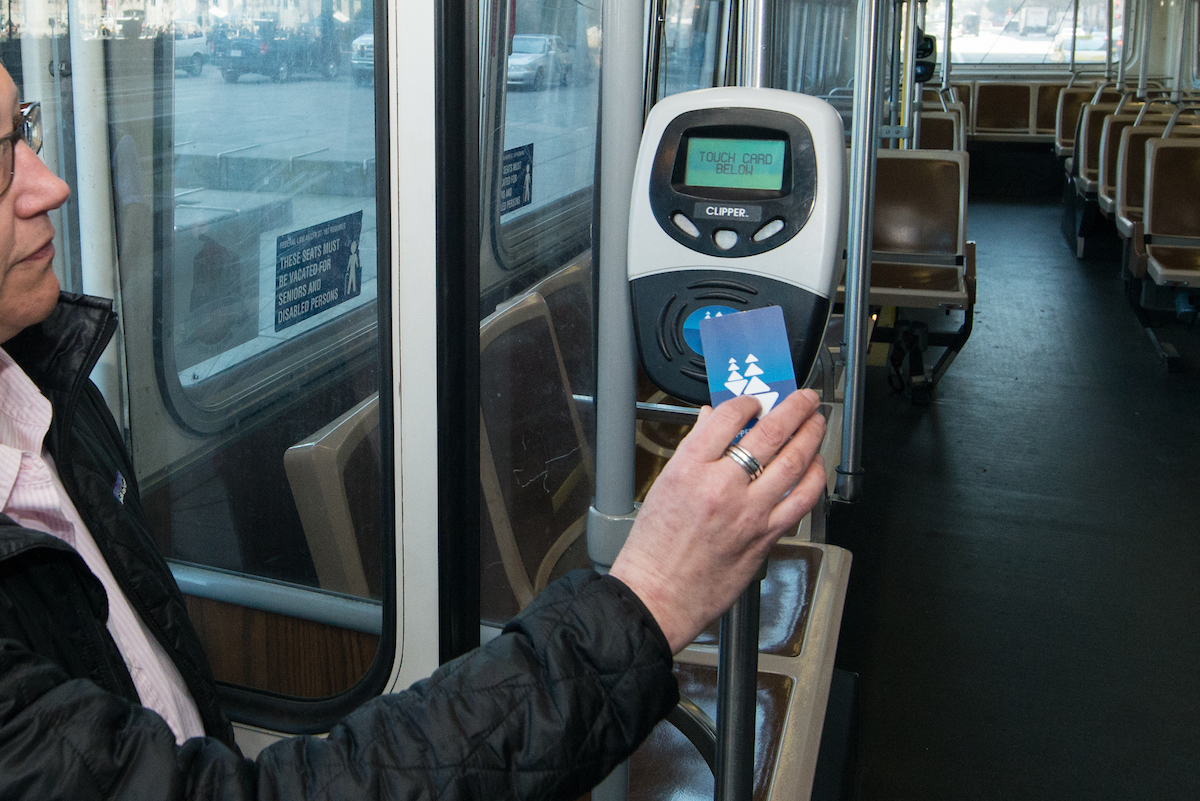
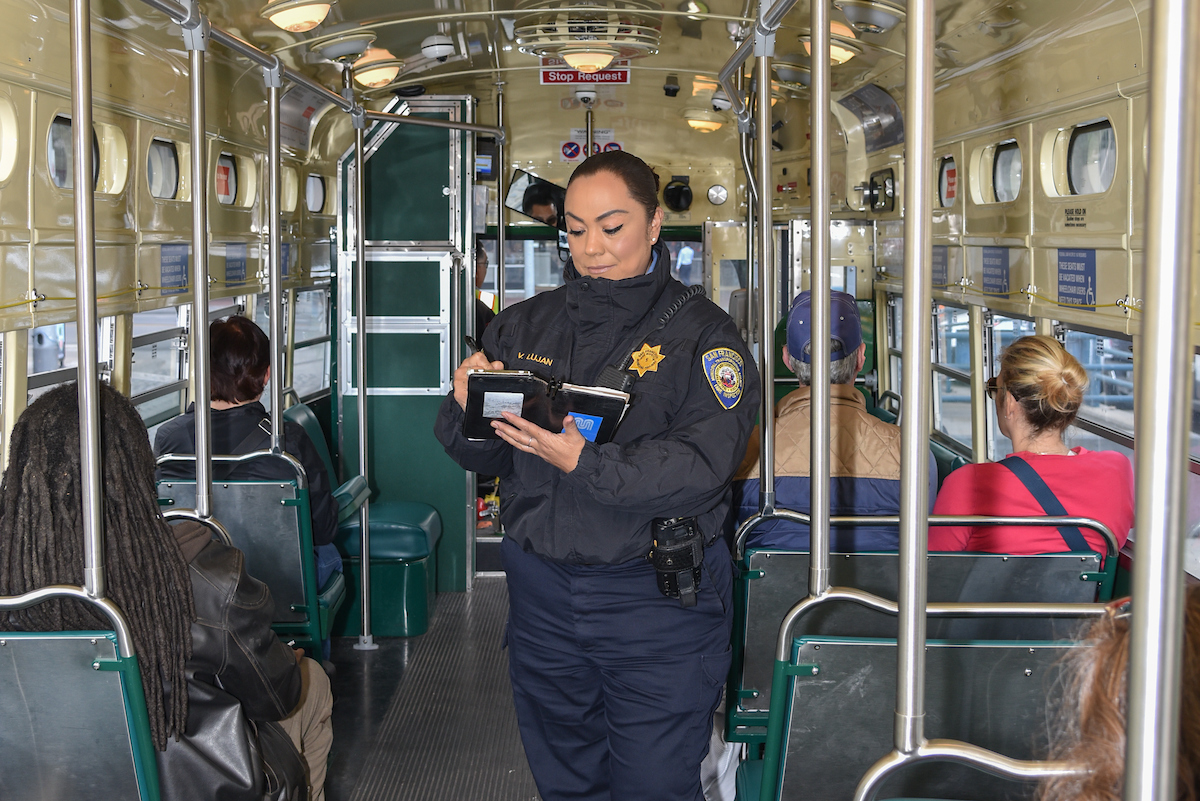 Transit Fare Inspector Veronica Lujan checks fare compliance on the F Market line.
Transit Fare Inspector Veronica Lujan checks fare compliance on the F Market line.

 We have 10 battery-electric buses now in service for our pilot program.
We have 10 battery-electric buses now in service for our pilot program.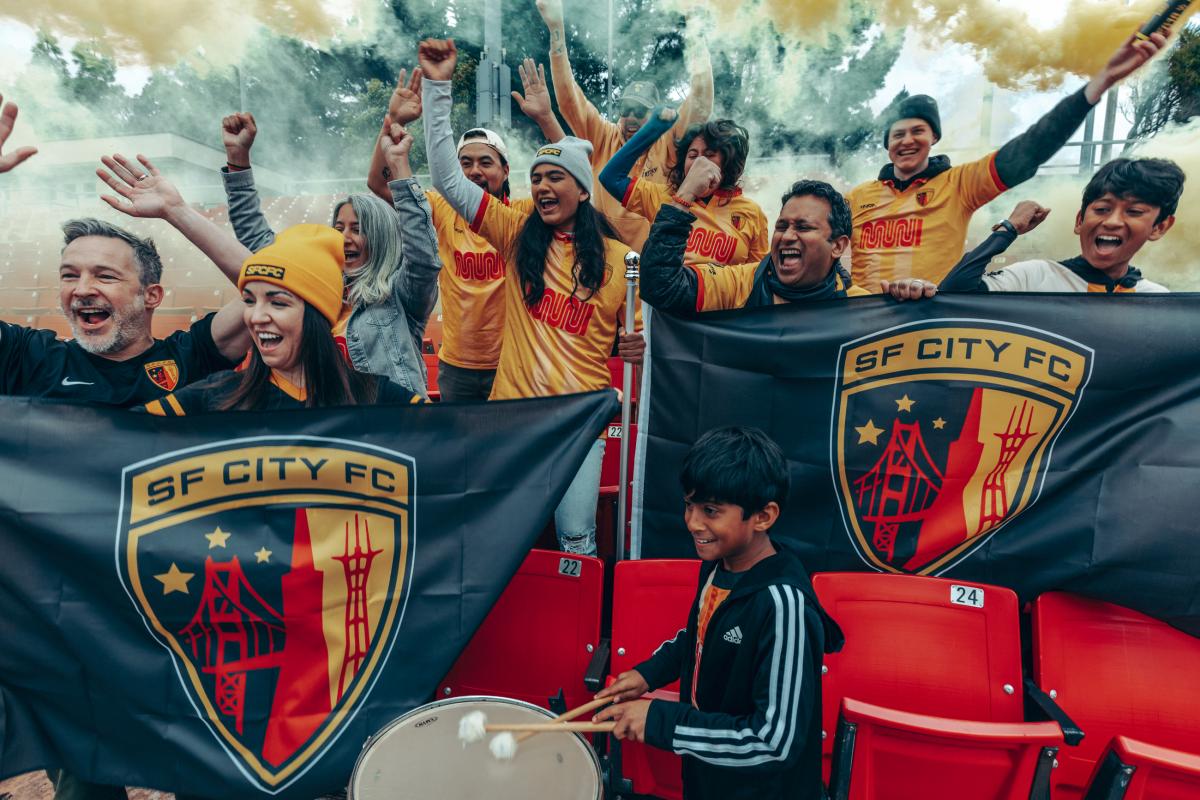
 An SF City FC player sports SFCFC’s new Muni-branded jersey at a bus stop.
An SF City FC player sports SFCFC’s new Muni-branded jersey at a bus stop.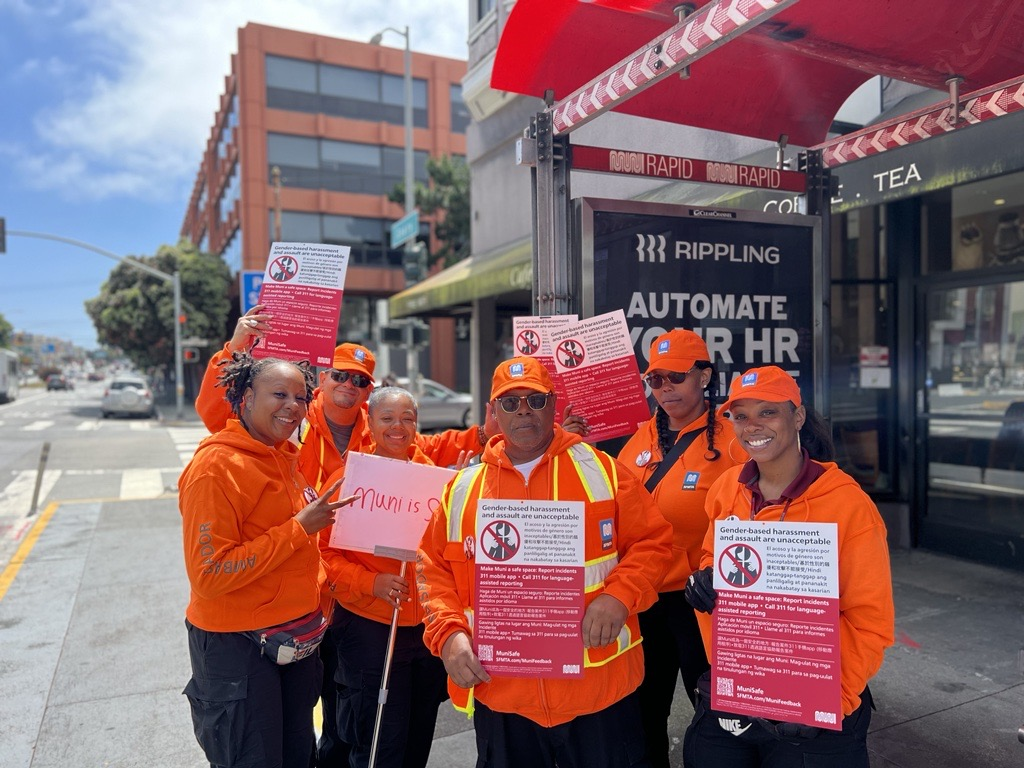
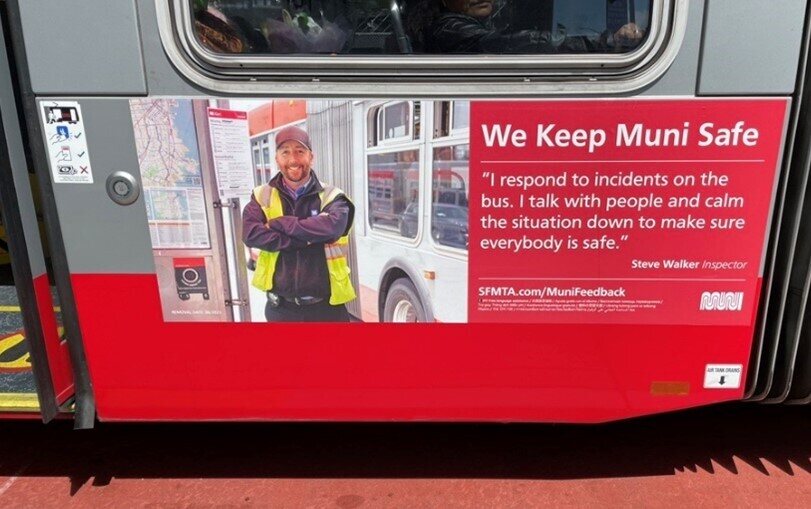
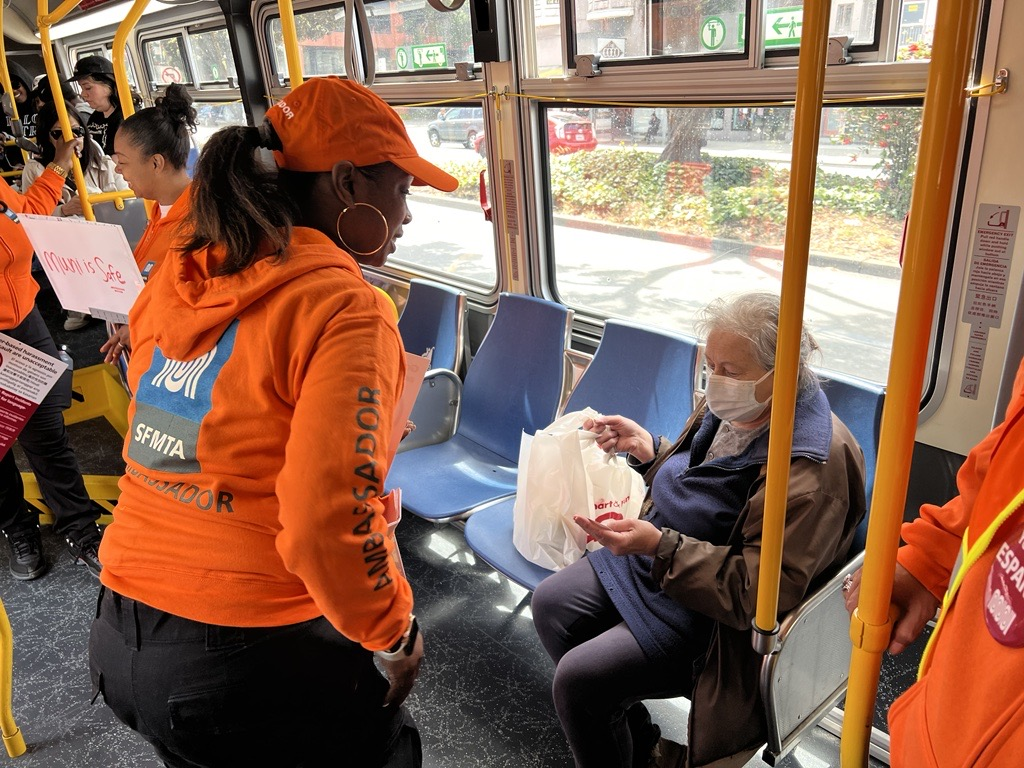 An SFMTA staffer teaches a rider how to report harassment and other issues.
An SFMTA staffer teaches a rider how to report harassment and other issues.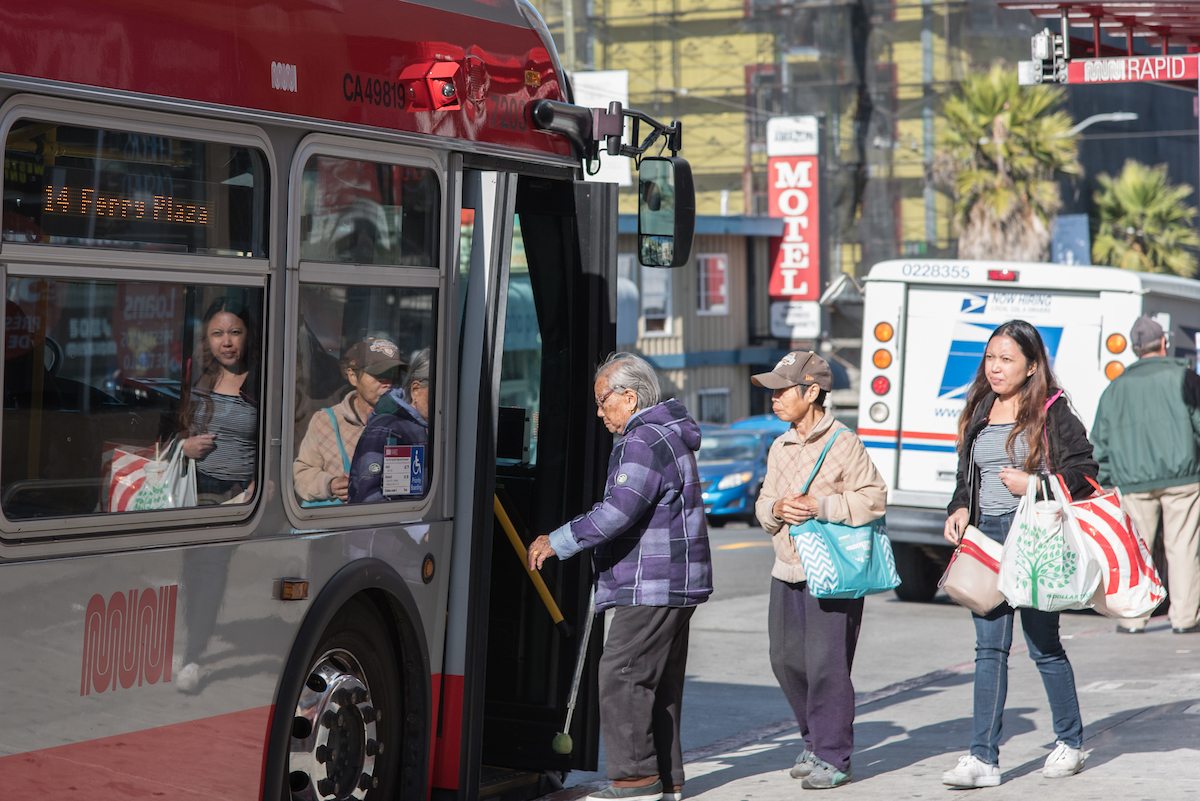
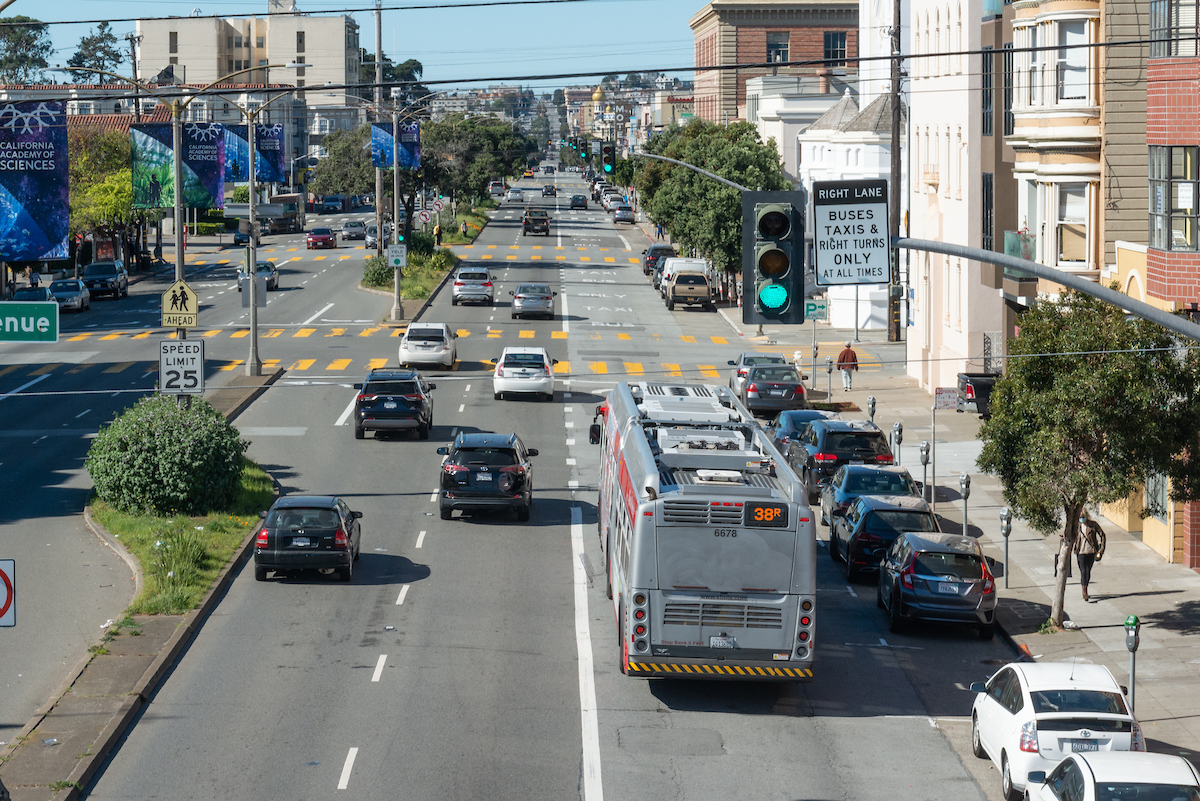 The new budget ensures people who pay in cash won’t see fare changes on their Muni rides.
The new budget ensures people who pay in cash won’t see fare changes on their Muni rides. 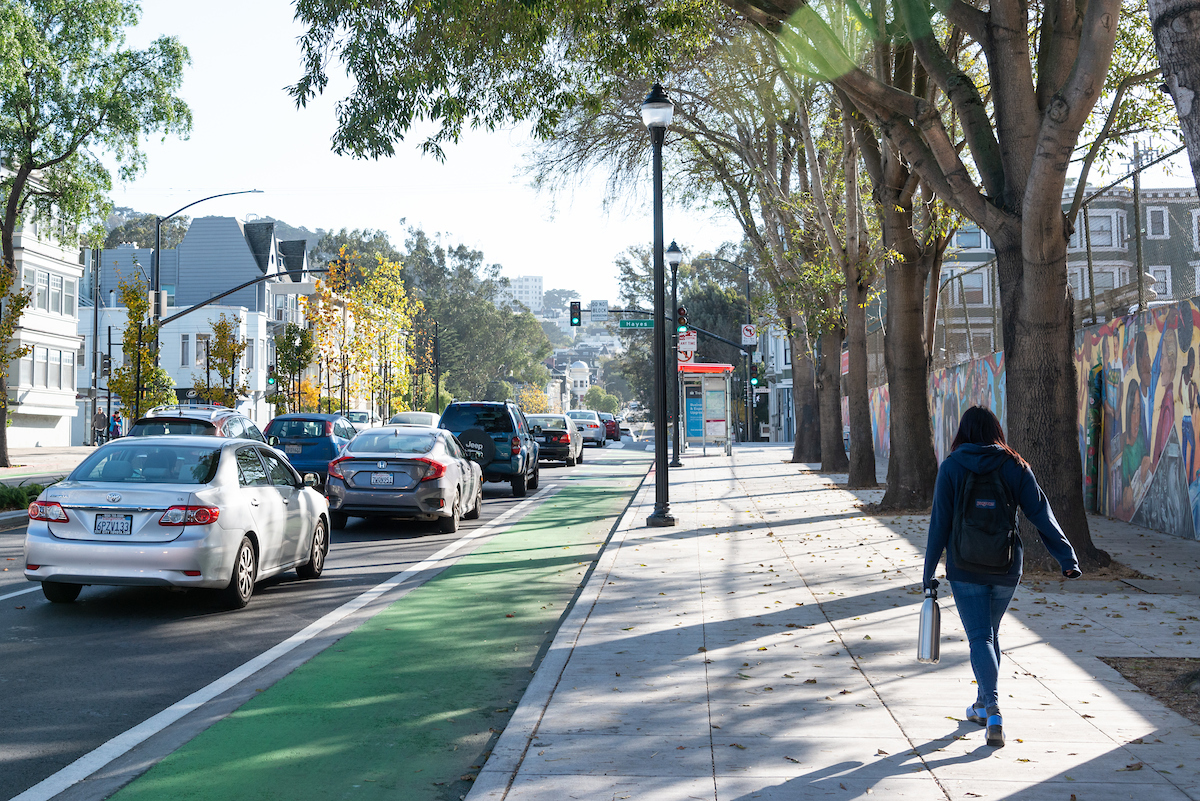
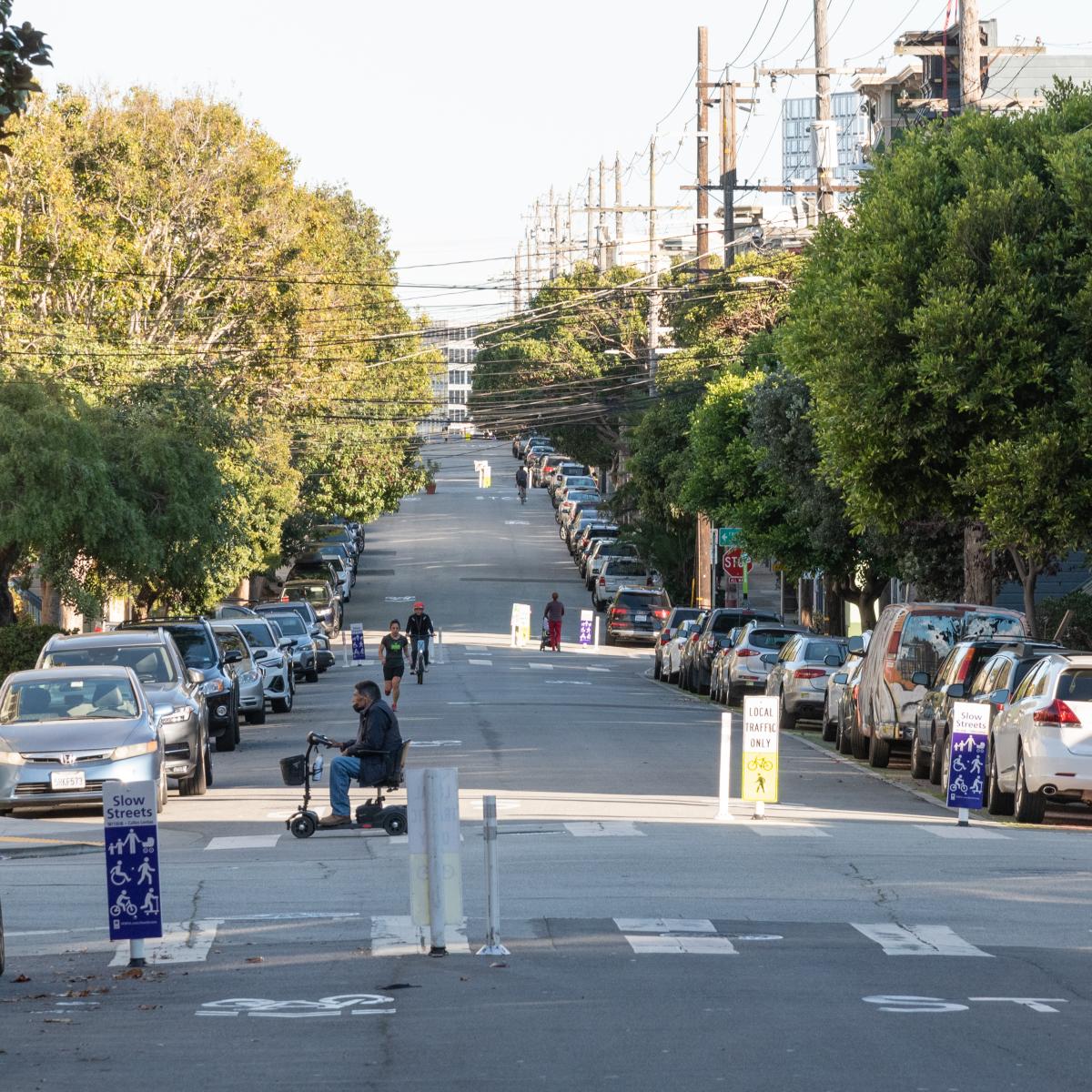 Our plan will help make travel safer for people who walk, bike, roll or use mobility devices.
Our plan will help make travel safer for people who walk, bike, roll or use mobility devices. 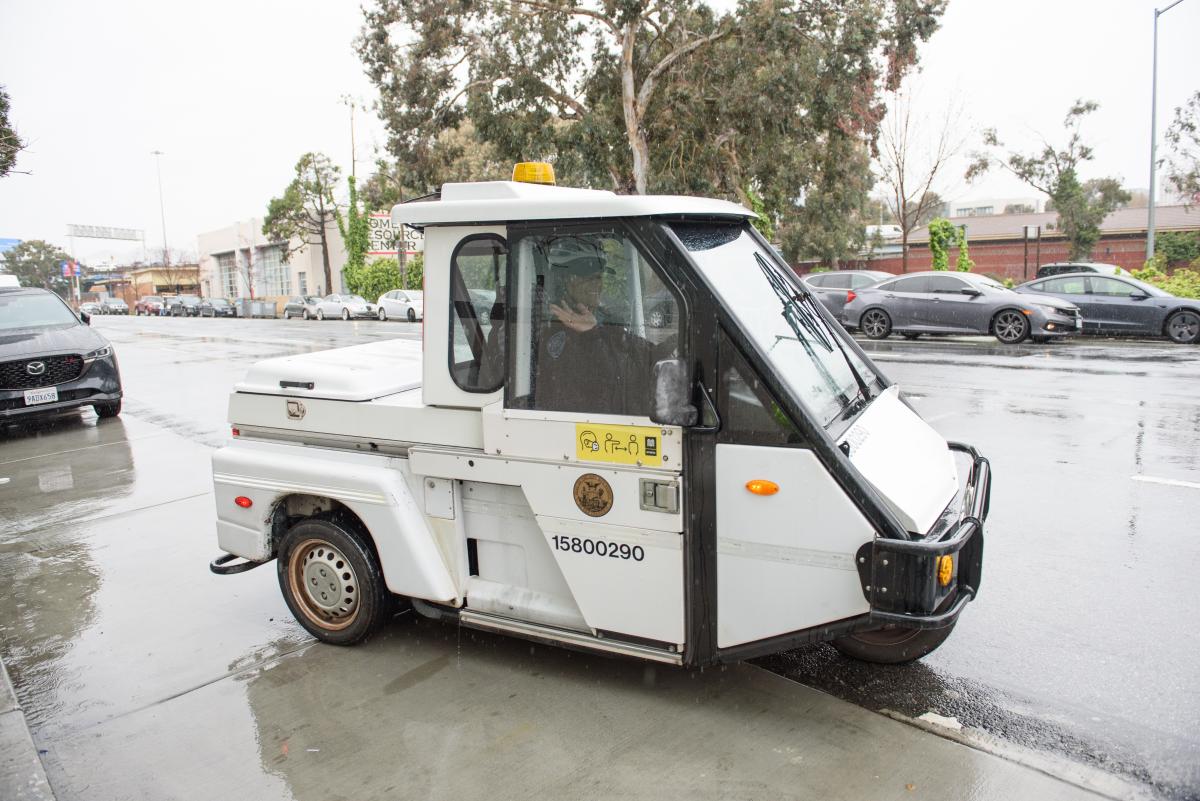 Our parking control officers work hard to keep streets and sidewalks safe.
Our parking control officers work hard to keep streets and sidewalks safe.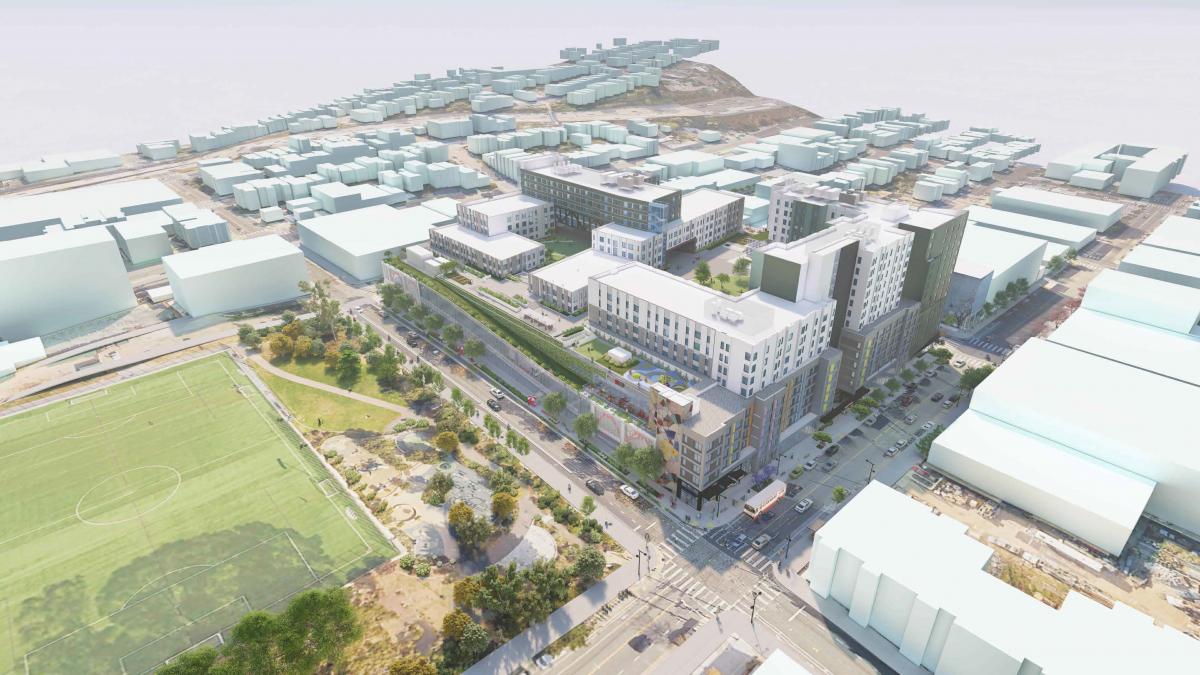
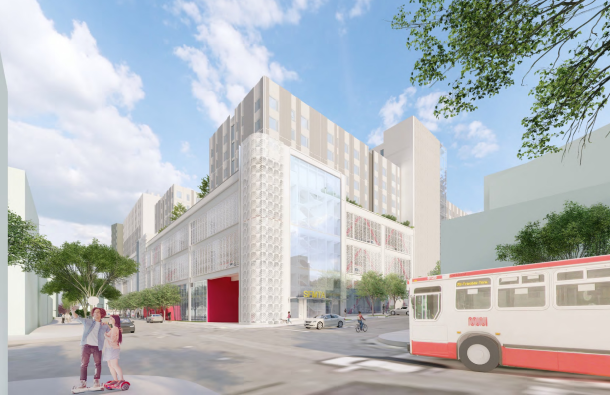
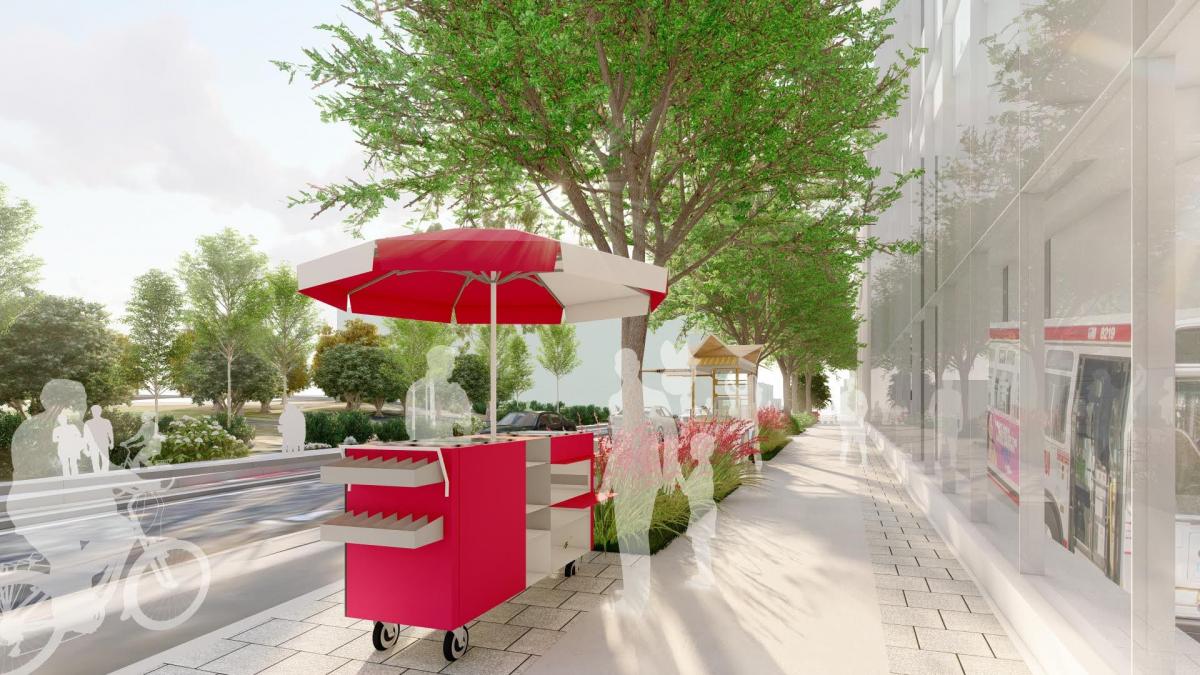 Illustration shows plans for a protected bike lane along 17th Street and vendor kiosks. (Arcadis IBI Group)
Illustration shows plans for a protected bike lane along 17th Street and vendor kiosks. (Arcadis IBI Group) 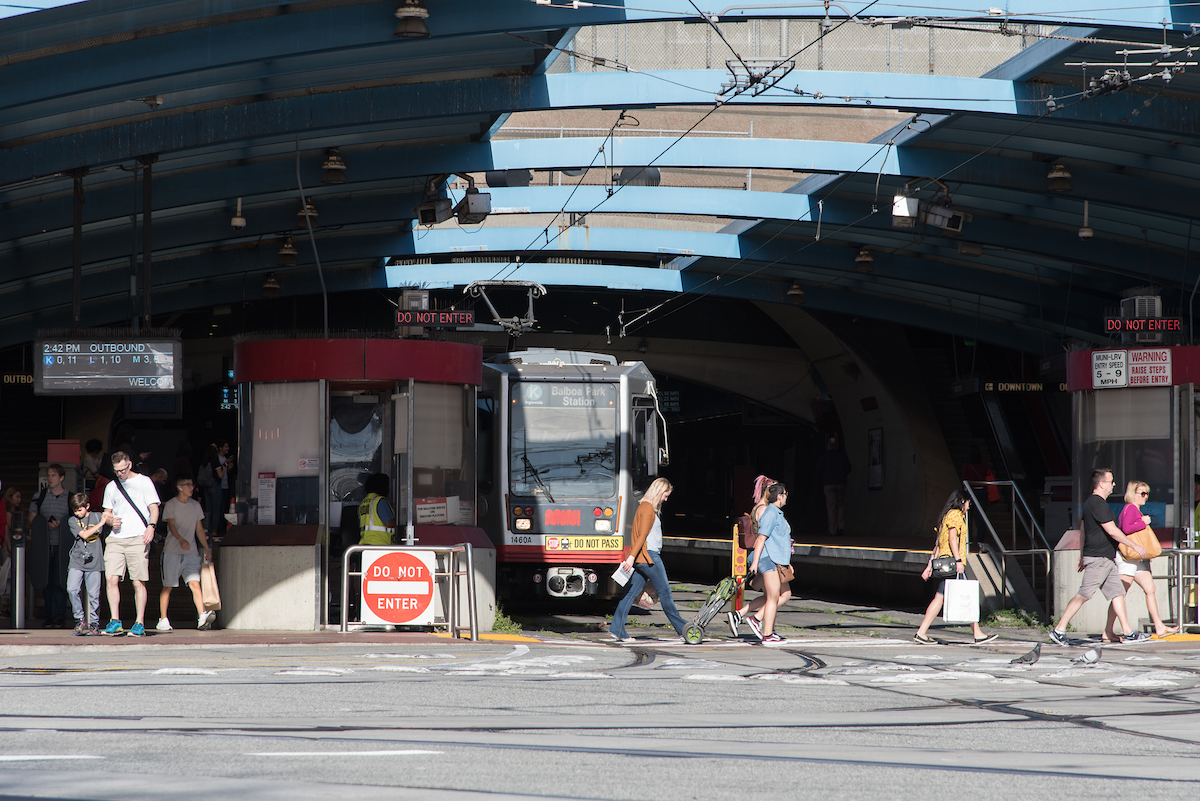
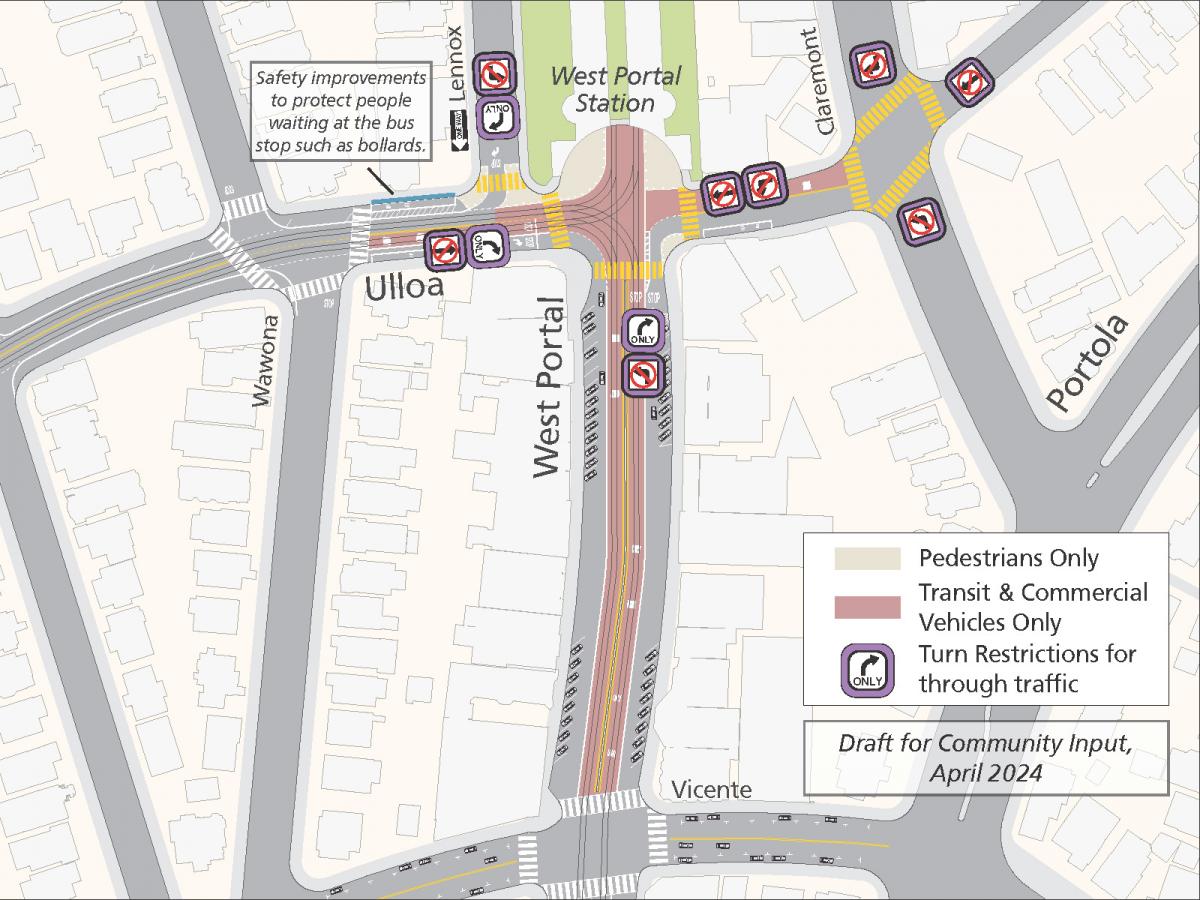
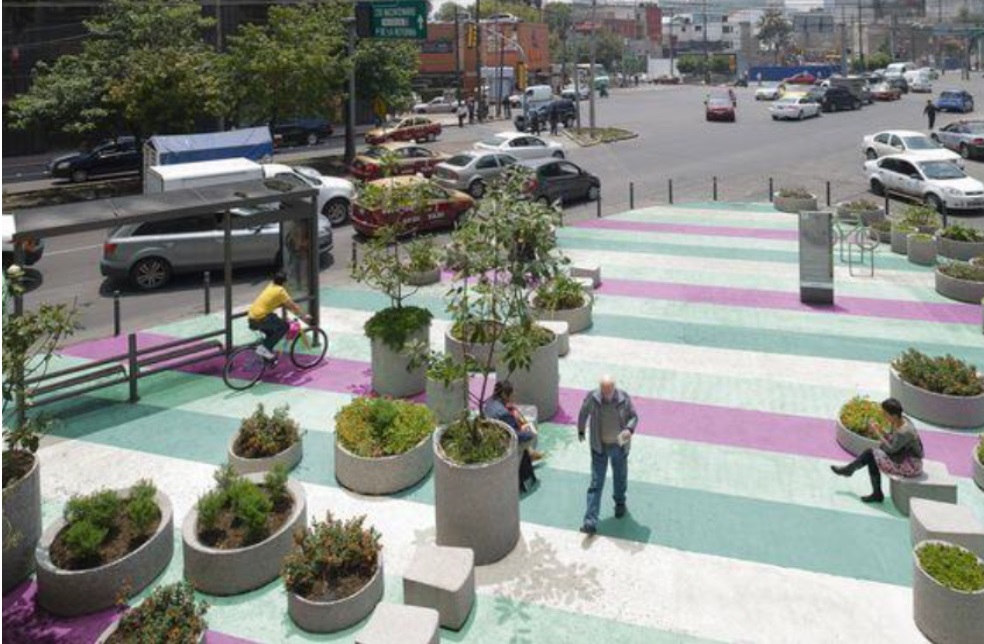
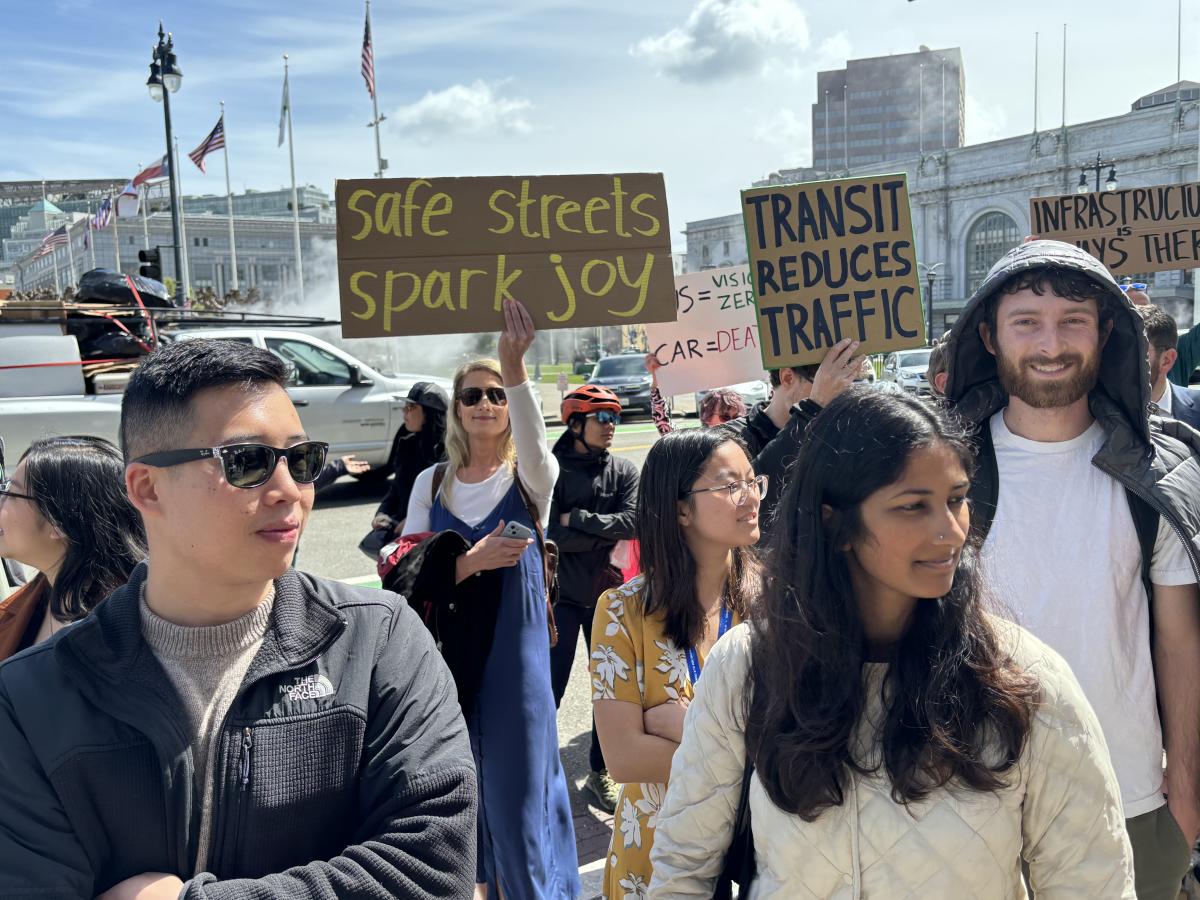
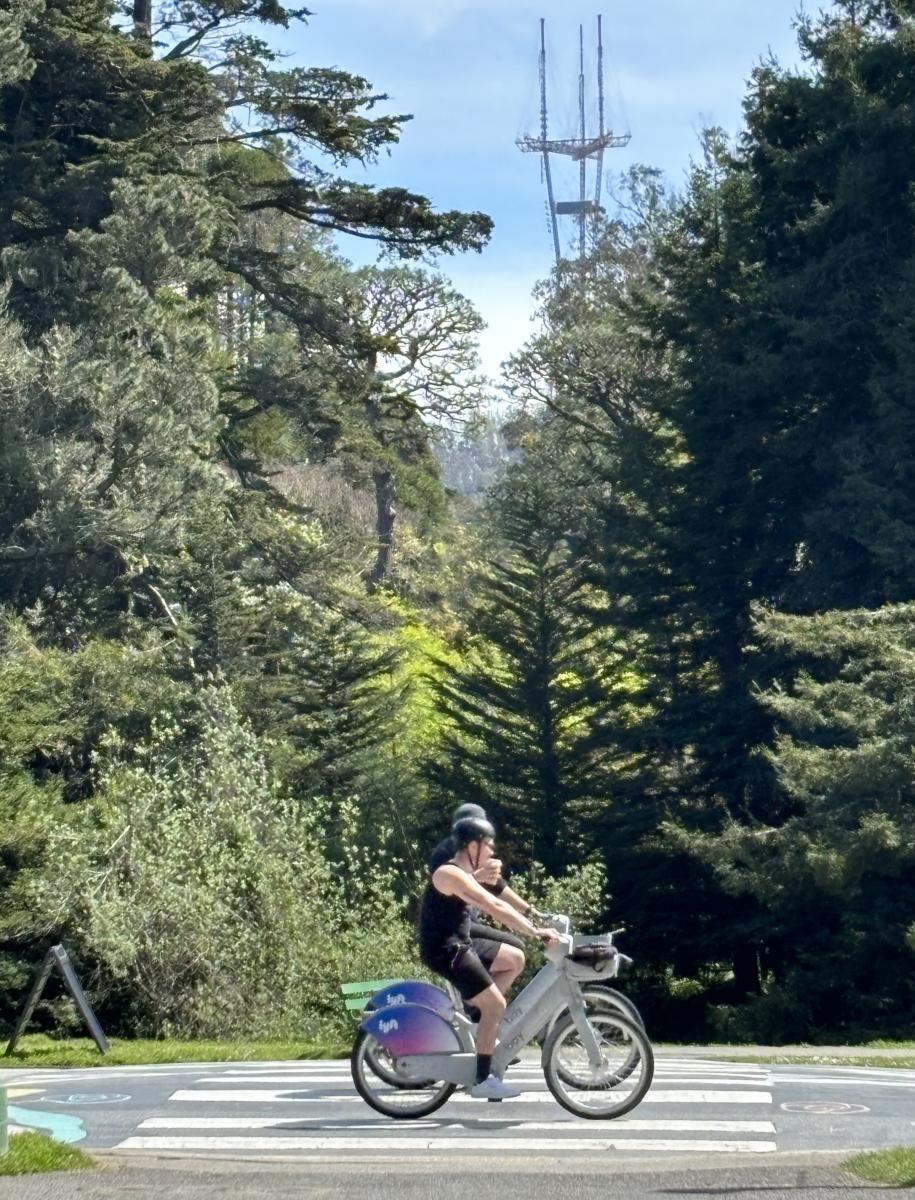 Bicyclists enjoy an afternoon riding along JFK Promenade in Golden Gate Park.
Bicyclists enjoy an afternoon riding along JFK Promenade in Golden Gate Park.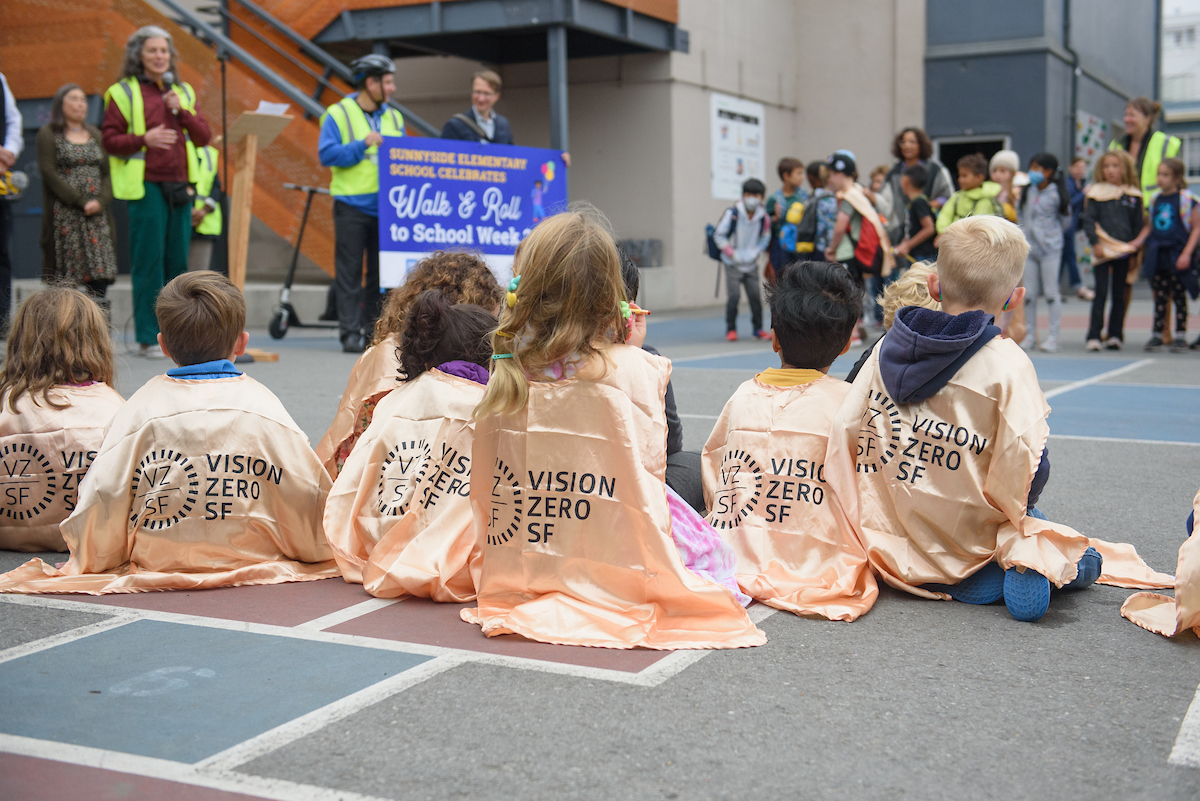 Students at Sunnyside Elementary School help kick off Walk and Roll to School Week in 2022. The event is part of our Safe Routes to School program.
Students at Sunnyside Elementary School help kick off Walk and Roll to School Week in 2022. The event is part of our Safe Routes to School program.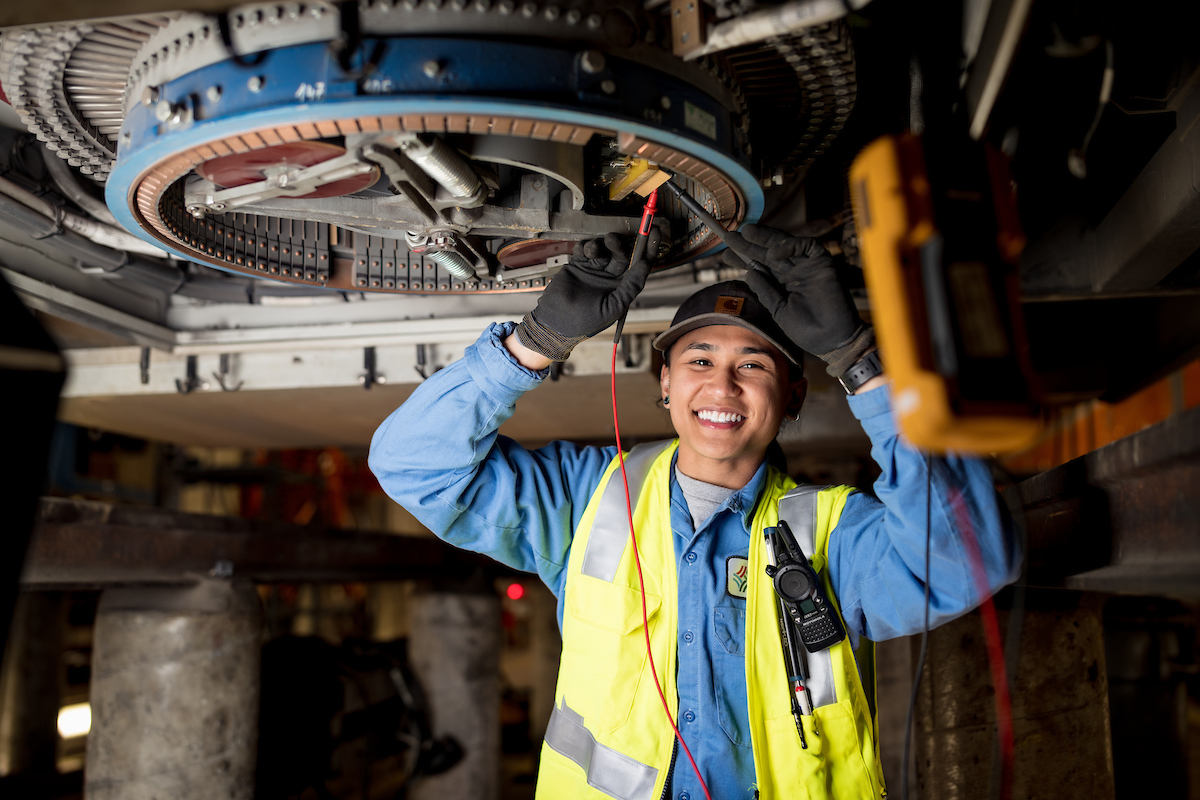 Jeena Villamor checks resistance on the contactors for an accelerator drum at the SFMTA.
Jeena Villamor checks resistance on the contactors for an accelerator drum at the SFMTA.